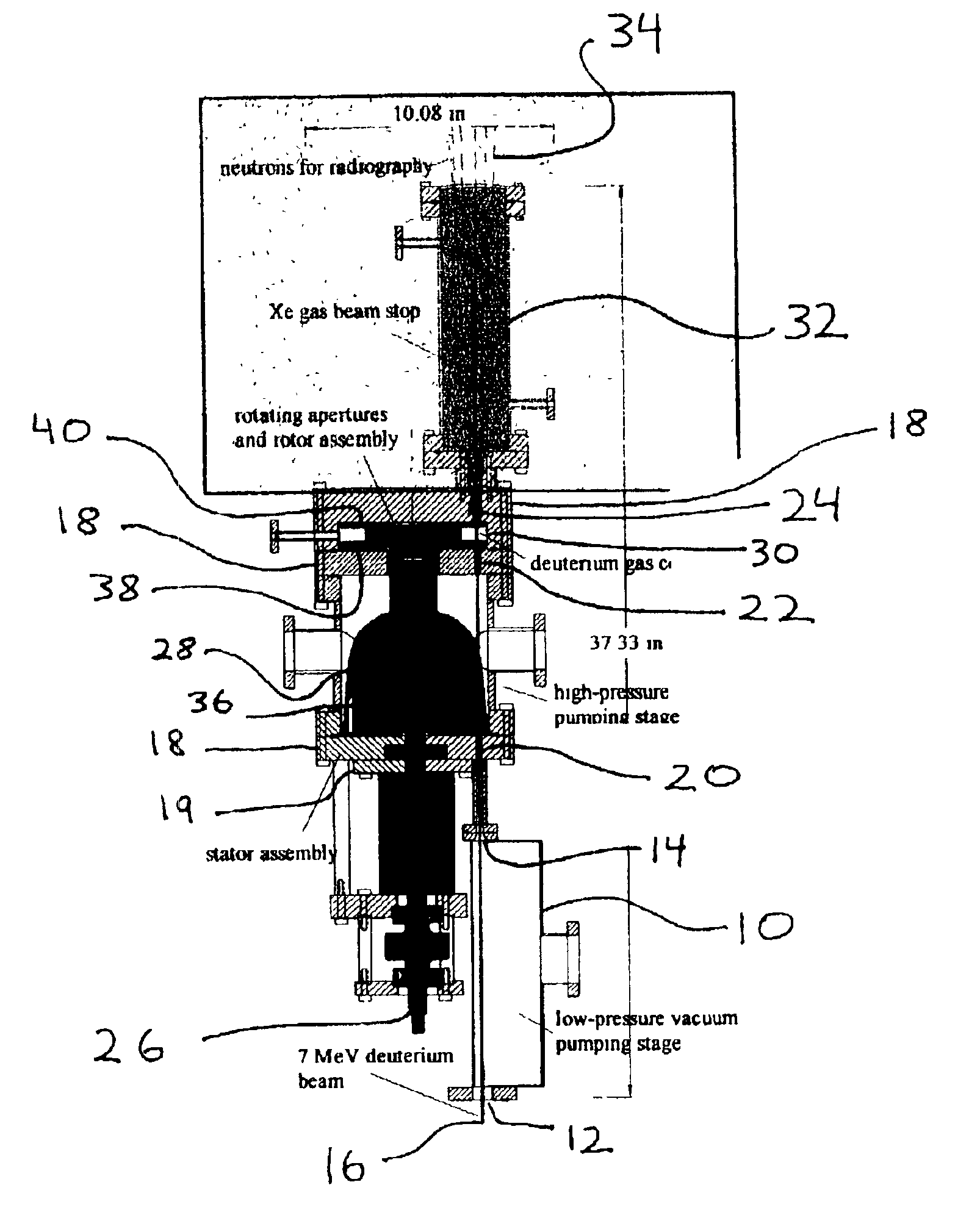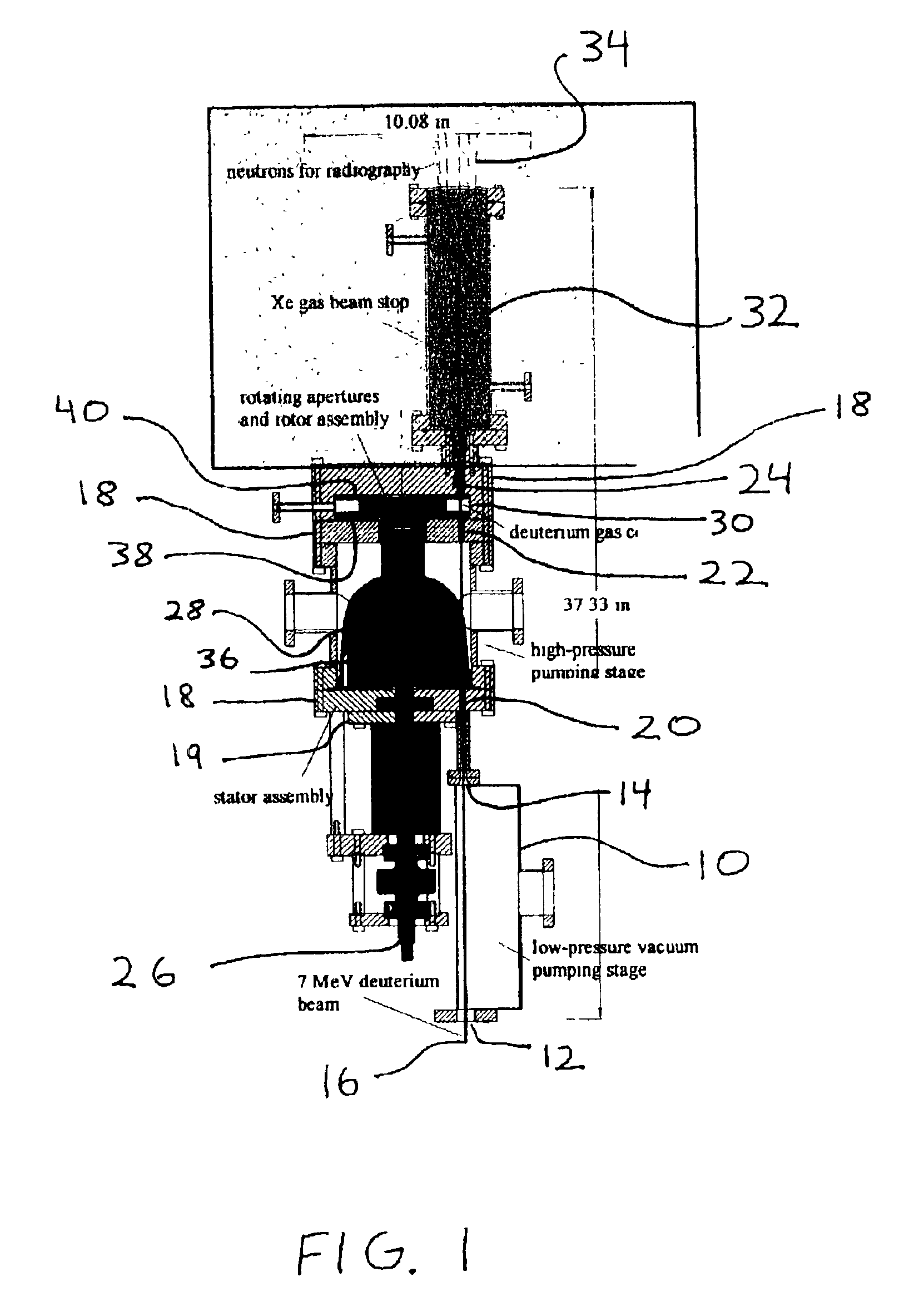Rotating aperture system
a rotating aperture and aperture technology, applied in the field of neutron radiography, can solve the problems of small leakage path, adversely affecting image interpretation, and definite leakage path, and achieve the effect of improving and extending the operating range of a “windowless” rotating aperture system
- Summary
- Abstract
- Description
- Claims
- Application Information
AI Technical Summary
Benefits of technology
Problems solved by technology
Method used
Image
Examples
Embodiment Construction
Rotating Aperture System—Turbulent Volume Gas Cell
The improvements to the rotating aperture system described here were conceived and implemented to enhance the sealing performance, neutron production rate, longevity, radiation hardness, and reliability over the design concept originally put forth in the literature. These improvements include:
1. The sealing around the discs is improved by using a non-galling material and effectively lapping the rotor and the stator. Doing this, minimal separation is achievable between the rotor and stator which should provide maximum sealing for a closed condition. This material is a soft ceramic such as boron nitride that will conformally lap when it comes in contact with a metal surface.
2. The aperture system was designed so the rotors would seal from the higher-pressure to the lower pressure side of the aperture, thus enabling the pressure gradient to help seal the aperture. The design of the shaft on tapered bearings allowed the rotor to be preci...
PUM
 Login to View More
Login to View More Abstract
Description
Claims
Application Information
 Login to View More
Login to View More - R&D
- Intellectual Property
- Life Sciences
- Materials
- Tech Scout
- Unparalleled Data Quality
- Higher Quality Content
- 60% Fewer Hallucinations
Browse by: Latest US Patents, China's latest patents, Technical Efficacy Thesaurus, Application Domain, Technology Topic, Popular Technical Reports.
© 2025 PatSnap. All rights reserved.Legal|Privacy policy|Modern Slavery Act Transparency Statement|Sitemap|About US| Contact US: help@patsnap.com



